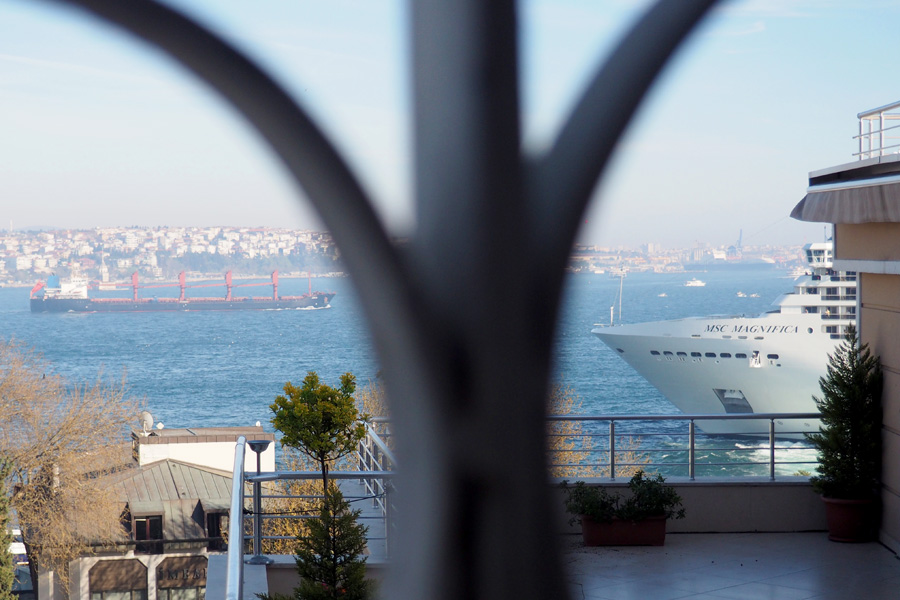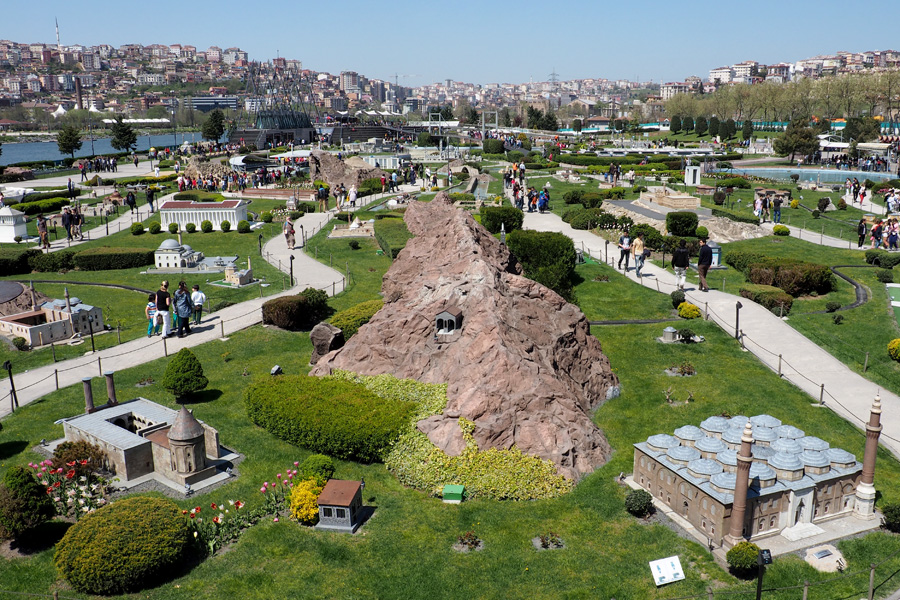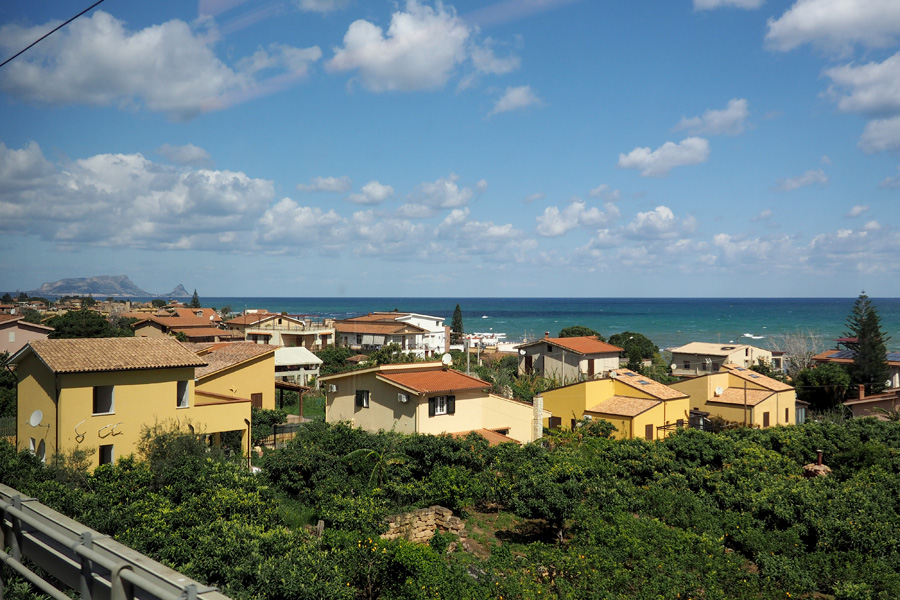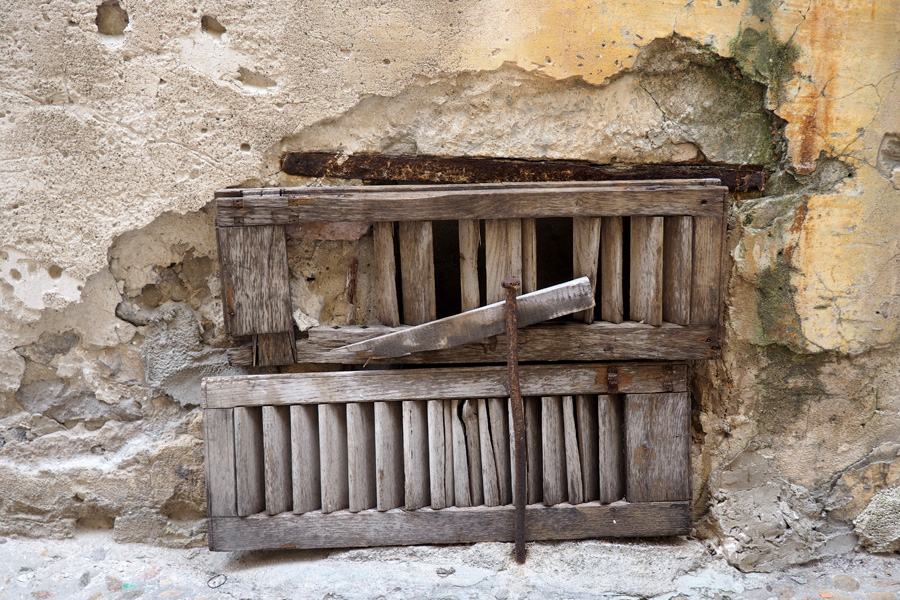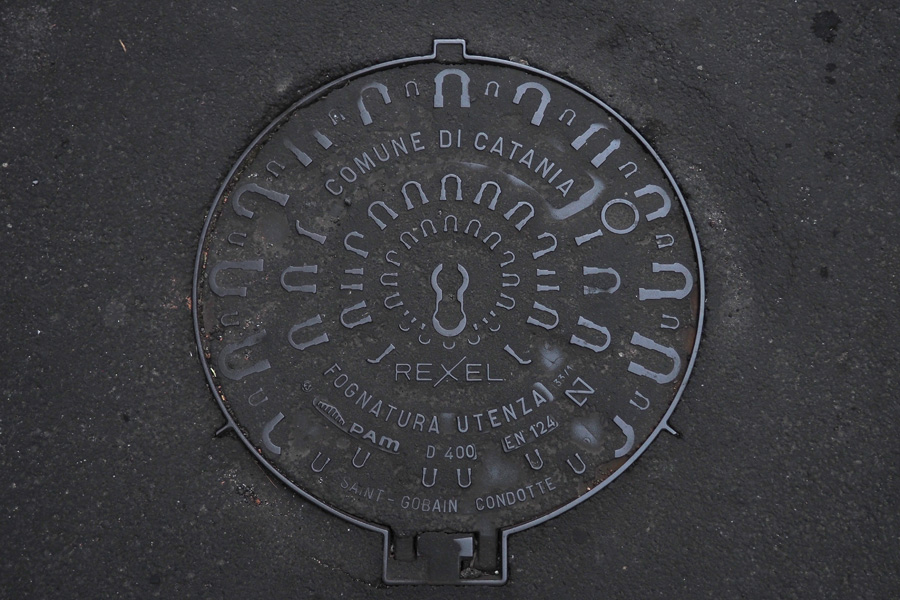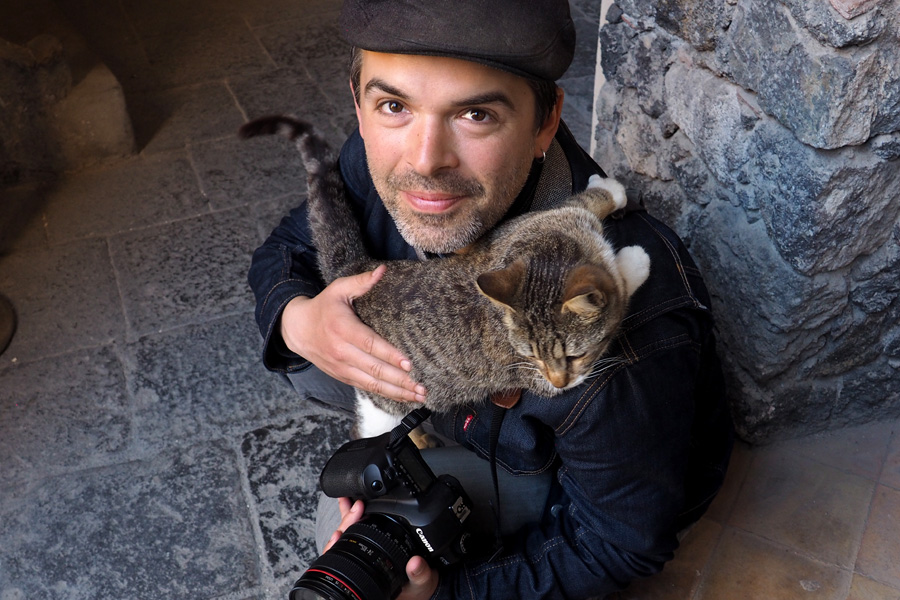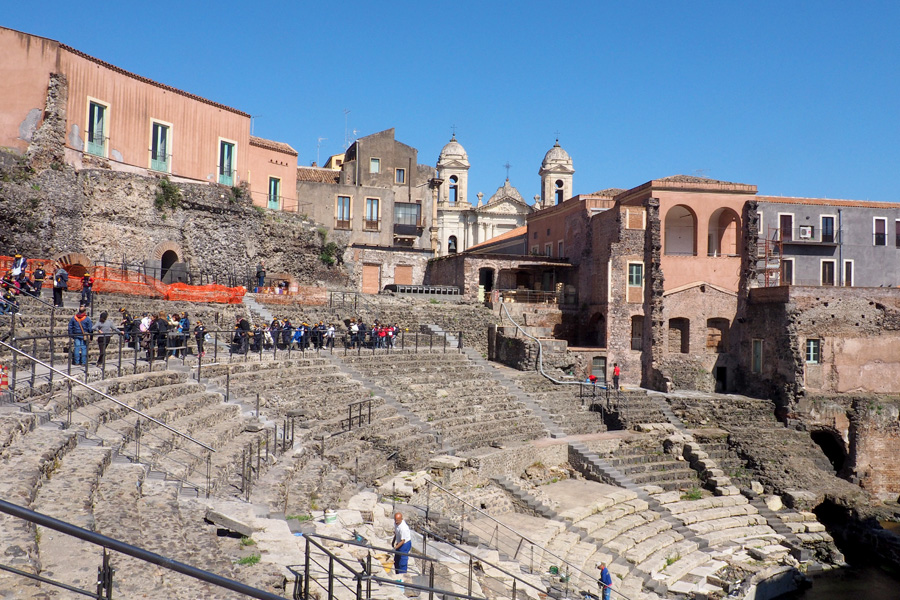Cappadocia: Go for the Natural Beauty
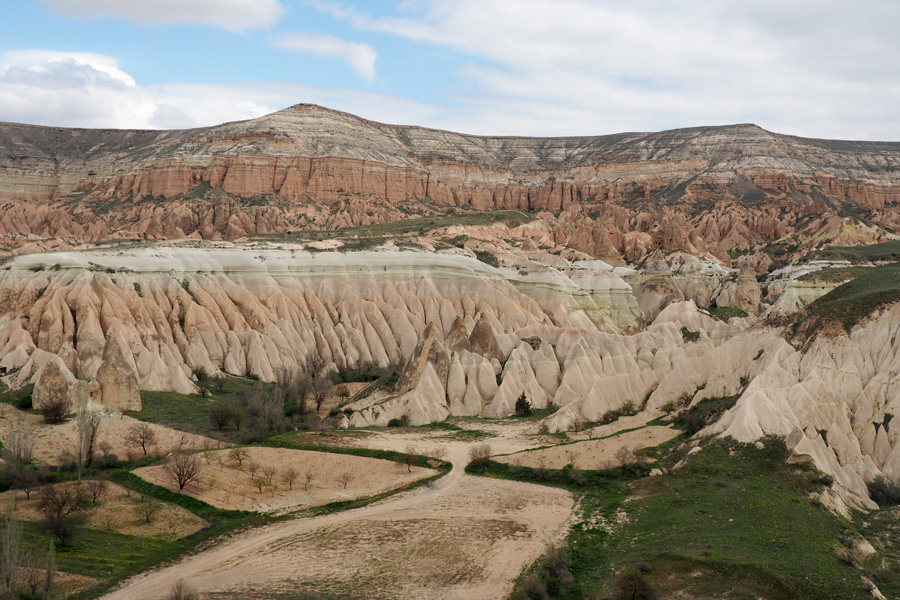
Rose Valley
When we visited Leh, India in 2008, it set the bar for natural beauty. Very few places have come close to matching it, and Göreme National Park and the Rock Formations of Cappadocia in central Turkey is one of those few. The volcanic rocks have a history of subterranean human inhabitation that dates back to 700AD and numerous examples of post-iconoclastic Byzantine artwork have been found here. But it is not the human history that I am drawn to. It is the natural landscape that makes me pause.
From our base in Göreme the volcanic formations were visible everywhere. During our 7 days here, we hiked up and down 4 of the Unesco protected valleys (Rose, Love, Pigeon & Görkündere) as well as the ridges that separate them. Each of the valleys has a distinctive landscape, and thanks to coming during the low season we felt as though we were the only ones there.
While you are in the valleys, there is an obvious human presence. Small farms are tucked into protected corners, ramshackle orange juice and tea shops are at the entrance and exit to every trail, and there are cave houses of unknown origin everywhere. Many of the dug out dwellings sit vacant and out of reach, but some are still inhabited by locals or possibly young college students trying to find a cheap place to stay (so says my former boss!).
The cities fortunate enough to be nestled into this landscape have a hard act to follow. Fortunately, about 80% of the buildings in Göreme and Uçhisar are either built into the hillside or built with stone excavated from the region. This lends itself to cities that blend with nature in a way that only local materials can, but it also means that the tradesmen of the region must be skilled at their craft. Also, the cities seem to be going through a building boom and new hotels and restaurants are being built on every corner while the existing ones in between are crumbling in place.
The final aspect of Cappadocia that cannot be hidden is that the valley is a tourist attraction. All natural and cultural wonders are and should be, but I am flabergasted at how many of the low season visitors we saw were at the paid sites (open air museum) and how few were hiking/strolling through the park itself. My favorite moments were spent sitting on a rock staring into the valleys or walking through fields of wild flowers. But I suppose there isn’t a story for those, and a lot of people travel to learn the stories. Also, because of the geography, the Göreme Valley is ideal for hot air balloon rides, and I am certain that the hot air balloon companies have the largest corner of the tourist market. While we didn’t go up in any baskets and we slept through the super-balloon frenzy that occurred Saturday morning, I was beyond excited when I saw a few massive balls of heat pass through the valleys at sunset. I even coaxed Nik out of bed at 5am on Sunday morning with the hope of seeing the spectacle. So I completely understand and support the business of riding in hot air balloons to experience this beautiful place the way that birds do. Rather than distracting from the natural beauty, they enhance it by using the natural phenomena that created this place to allow people to experience the valleys the way that the swifts do.

The view from “our hill”

Pigeon Valley with Uçhisar in the distance

Divan Cave Hotel

The old man with a gas mask rock
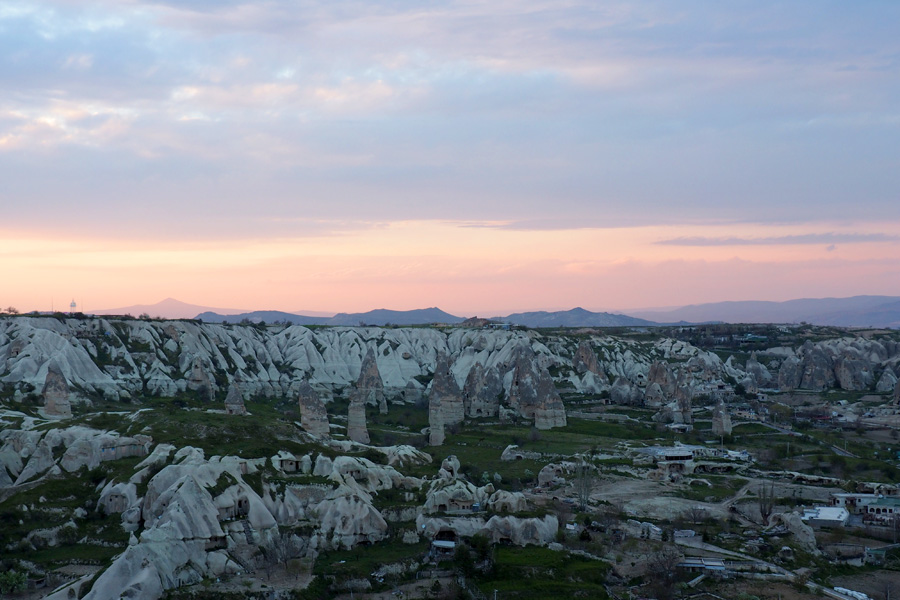
Sunset
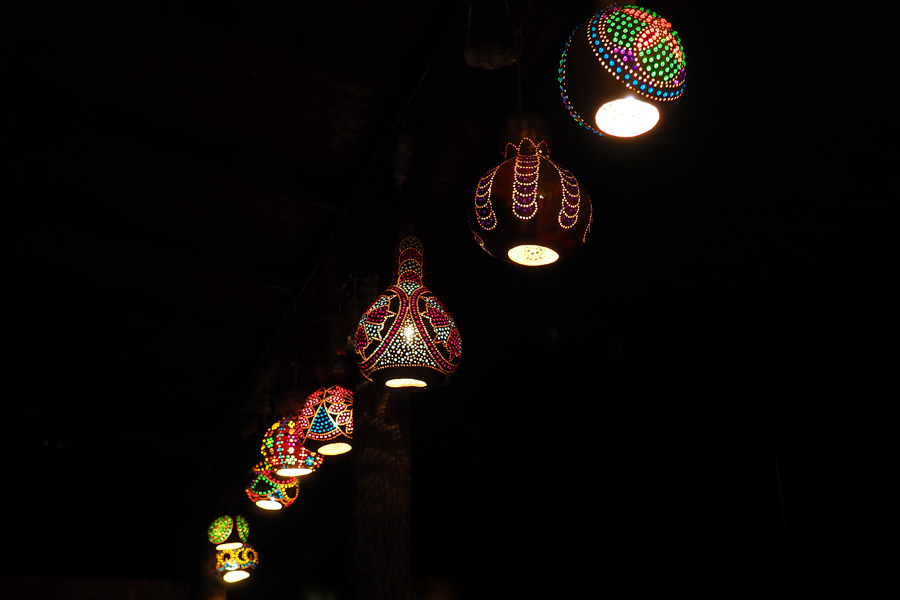
Gourds carved and filled with beads

A handsome pair

Strut

We believe that the small recesses carved into the stones are bird houses

Stone Mason
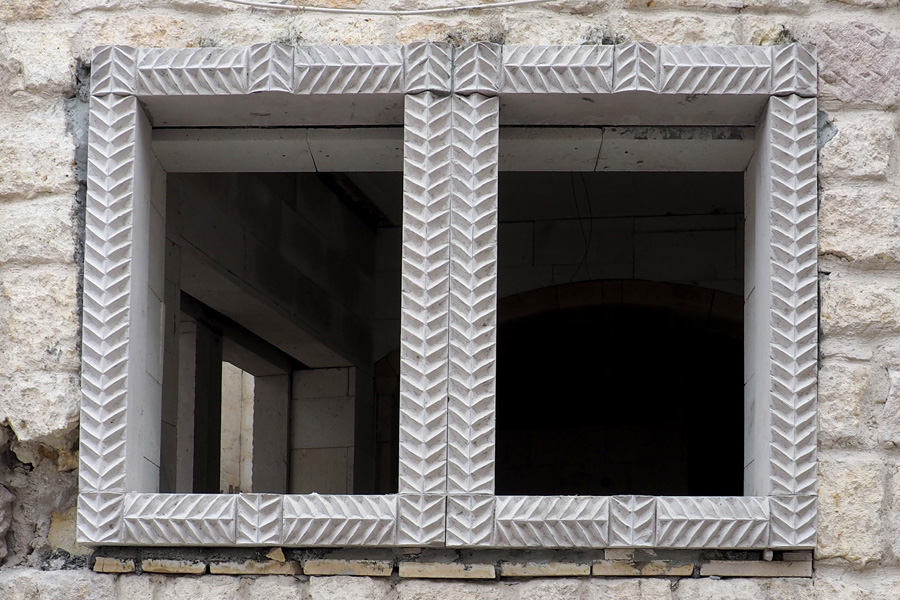
The results of the Mason’s hard work

On the ledge
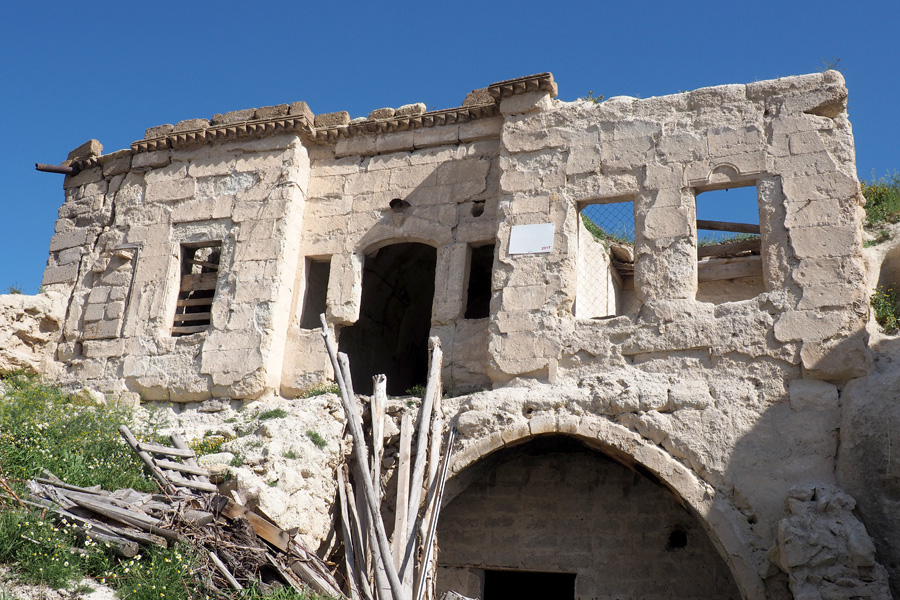
Buildings in ruin

Göreme Street Life

Melting Stone

A valley named “love valley” because of the phallic rock formations
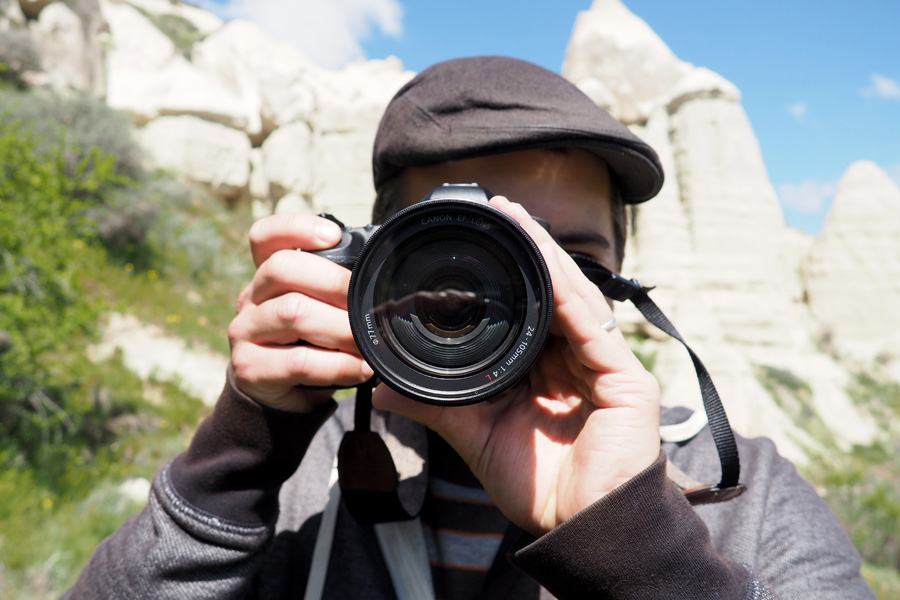
Big Lens

Openings – possibly natural?

Carved Cave Hosue

Detailed stone work in Ürgüp

Sculpture at the trailhead for Pigeon Valley

Small tree, big rock

Mushroom tops

Ruins

Floating above

Steam Punk Balloon
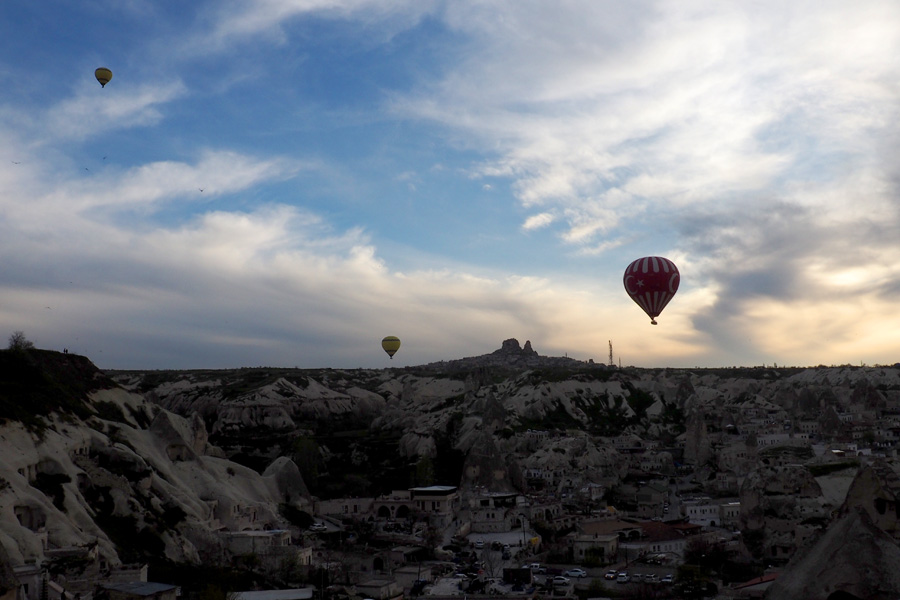
Hot Air Balloons at sunset

Landing

Rose Valley Plateau









